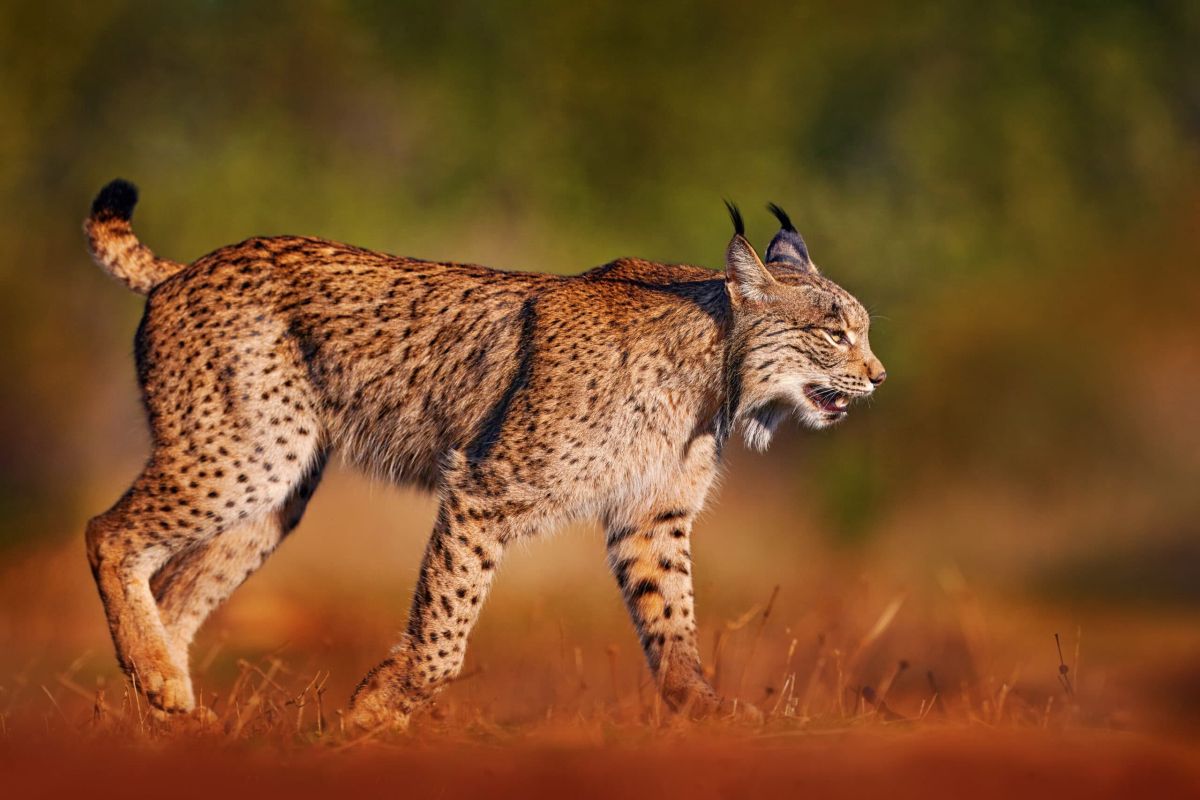The Iberian Lynx: A Tale of Conservation and Resilience

The Iberian lynx (Lynx pardinus) is a captivating and charismatic feline native to the Iberian Peninsula, which includes parts of Spain and Portugal. It is not just notable for its striking appearance, featuring tufted ears, a short tail, and a distinctive spotted coat, but also for its precarious status as one of the world’s most endangered big cats. Once widespread across southern Europe, the Iberian lynx saw its populations decimated over the last century due to habitat loss, hunting, and a decline in its primary prey, the European rabbit. However, concerted conservation efforts in recent years have offered a glimmer of hope for this majestic creature.
Physical Characteristics
The Iberian lynx is the largest species of lynx in the world, standing approximately 60-70 centimeters tall at the shoulder and weighing between 8 to 14 kilograms. It possesses long legs, a short, stubby tail, and distinctive tufts of black fur on its ears that enhance its acute sense of hearing. The fur is typically a light tawny color with distinctive dark spots, providing excellent camouflage in its woodland and scrubland habitats. The lynx is also known for its impressive eyesight, allowing it to spot prey from a distance.
Habitat and Range
Historically, the Iberian lynx roamed a broad expanse of the Iberian Peninsula, from Portugal to much of Spain. However, agricultural expansion, urbanization, and deforestation have significantly reduced its habitat. Currently, the lynx is primarily found in several isolated regions in southern Spain, particularly in the Andalusia region, which is home to the Sierra de Andújar and Doñana National Parks. Efforts to restore and protect these habitats are crucial for the survival of the species.
Ecological Role
As a top predator, the Iberian lynx plays a vital role in maintaining the health of its ecosystem. Its primary prey is the European rabbit (Oryctolagus cuniculus), which constitutes a significant proportion of its diet. The relationship between the lynx and its prey highlights a delicate ecological balance; a decline in rabbit populations due to disease or habitat loss directly affects lynx survival. By managing rabbit populations, the Iberian lynx helps prevent overgrazing and supports plant diversity in its environment.
Conservation Status
The Iberian lynx was classified as “Critically Endangered” by the International Union for Conservation of Nature (IUCN) in 2002, with estimates suggesting that fewer than 100 individuals remained in the wild. However, thanks to extensive conservation initiatives, including habitat restoration, captive breeding programs, and stringent measures to protect both lynx and rabbit populations, the situation has improved. By 2021, the Iberian lynx’s status was upgraded to “Endangered,” with an estimated population of around 400 individuals.
Conservation Efforts
Efforts to conserve the Iberian lynx have been multifaceted and collaborative, involving government agencies, NGOs, and local communities. Key strategies include:
- Captive Breeding and Reintroduction: Captive breeding programs began in the early 2000s to boost population numbers. Lynx bred in captivity have been successfully reintroduced into the wild, aiding the recovery of their populations.
- Habitat Restoration: Restoration of habitats, including maximizing the availability of European rabbits, is essential for the lynx’s survival. Initiatives to improve and maintain their habitats, such as the creation of wildlife corridors, have shown positive results.
- Monitoring and Research: Ongoing research and monitoring help scientists understand the behaviors, health, and movements of the lynx, providing valuable data to inform conservation strategies.
- Public Awareness and Education: Raising awareness about the Iberian lynx and its plight fosters local and national support for conservation efforts. Educational programs often engage local communities, emphasizing the importance of biodiversity and the ecological role of the lynx.
Conclusion
The Iberian lynx stands as a powerful symbol of the challenges facing wildlife in a rapidly changing world. Its journey from the brink of extinction to a revitalized population is a testament to the effectiveness of dedicated conservation efforts. However, continued vigilance is essential to ensure that both the lynx and its habitat remain protected from ongoing threats. The future of the Iberian lynx is not just a story of survival; it embodies the resilience of nature and humanity’s capacity to make a difference. Protecting this magnificent feline is crucial not only for its own sake but for the preservation of the unique ecosystems of the Iberian Peninsula.



